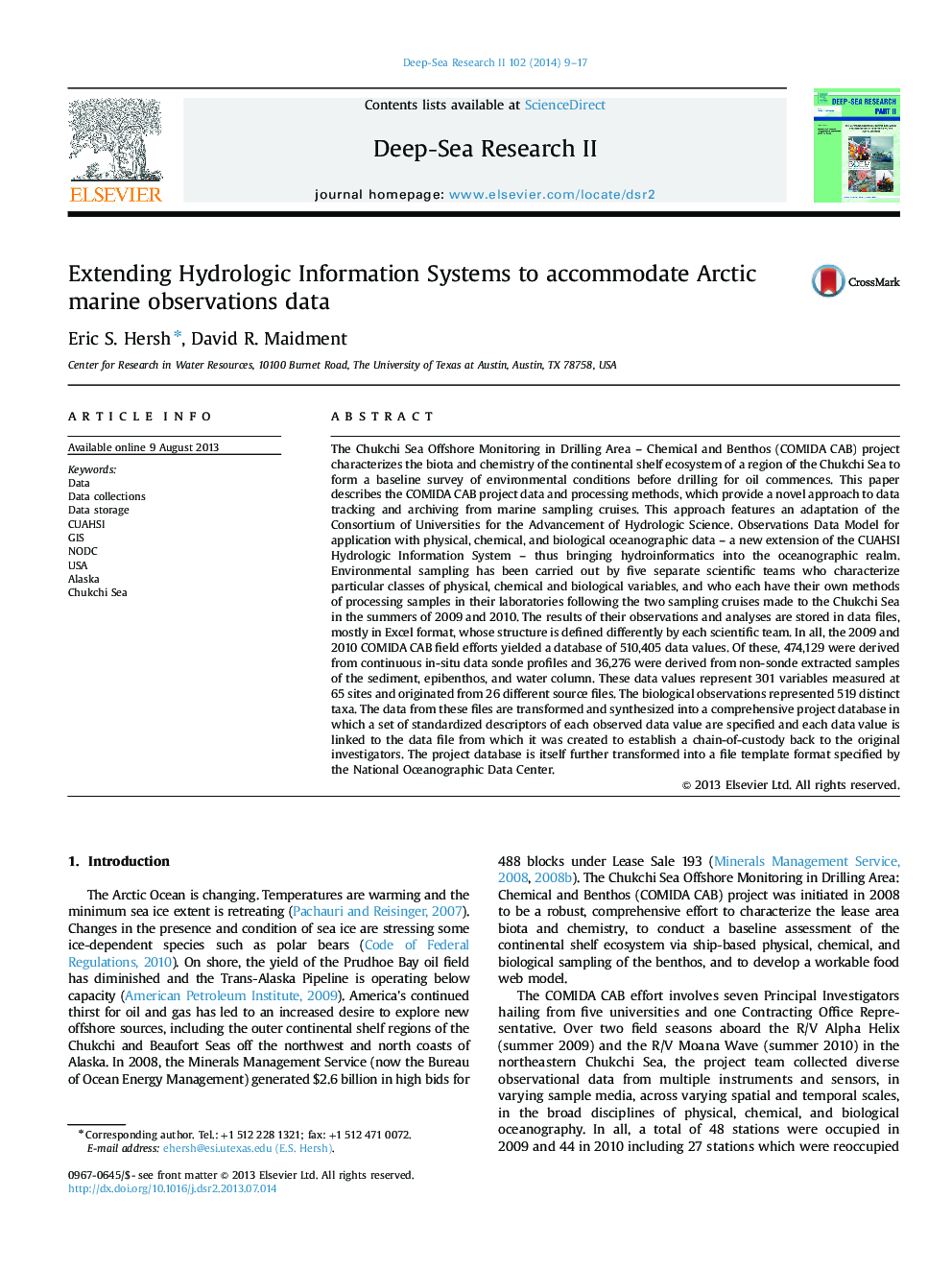| کد مقاله | کد نشریه | سال انتشار | مقاله انگلیسی | نسخه تمام متن |
|---|---|---|---|---|
| 4536409 | 1626438 | 2014 | 9 صفحه PDF | دانلود رایگان |
The Chukchi Sea Offshore Monitoring in Drilling Area – Chemical and Benthos (COMIDA CAB) project characterizes the biota and chemistry of the continental shelf ecosystem of a region of the Chukchi Sea to form a baseline survey of environmental conditions before drilling for oil commences. This paper describes the COMIDA CAB project data and processing methods, which provide a novel approach to data tracking and archiving from marine sampling cruises. This approach features an adaptation of the Consortium of Universities for the Advancement of Hydrologic Science. Observations Data Model for application with physical, chemical, and biological oceanographic data – a new extension of the CUAHSI Hydrologic Information System – thus bringing hydroinformatics into the oceanographic realm. Environmental sampling has been carried out by five separate scientific teams who characterize particular classes of physical, chemical and biological variables, and who each have their own methods of processing samples in their laboratories following the two sampling cruises made to the Chukchi Sea in the summers of 2009 and 2010. The results of their observations and analyses are stored in data files, mostly in Excel format, whose structure is defined differently by each scientific team. In all, the 2009 and 2010 COMIDA CAB field efforts yielded a database of 510,405 data values. Of these, 474,129 were derived from continuous in-situ data sonde profiles and 36,276 were derived from non-sonde extracted samples of the sediment, epibenthos, and water column. These data values represent 301 variables measured at 65 sites and originated from 26 different source files. The biological observations represented 519 distinct taxa. The data from these files are transformed and synthesized into a comprehensive project database in which a set of standardized descriptors of each observed data value are specified and each data value is linked to the data file from which it was created to establish a chain-of-custody back to the original investigators. The project database is itself further transformed into a file template format specified by the National Oceanographic Data Center.
Journal: Deep Sea Research Part II: Topical Studies in Oceanography - Volume 102, April 2014, Pages 9–17
